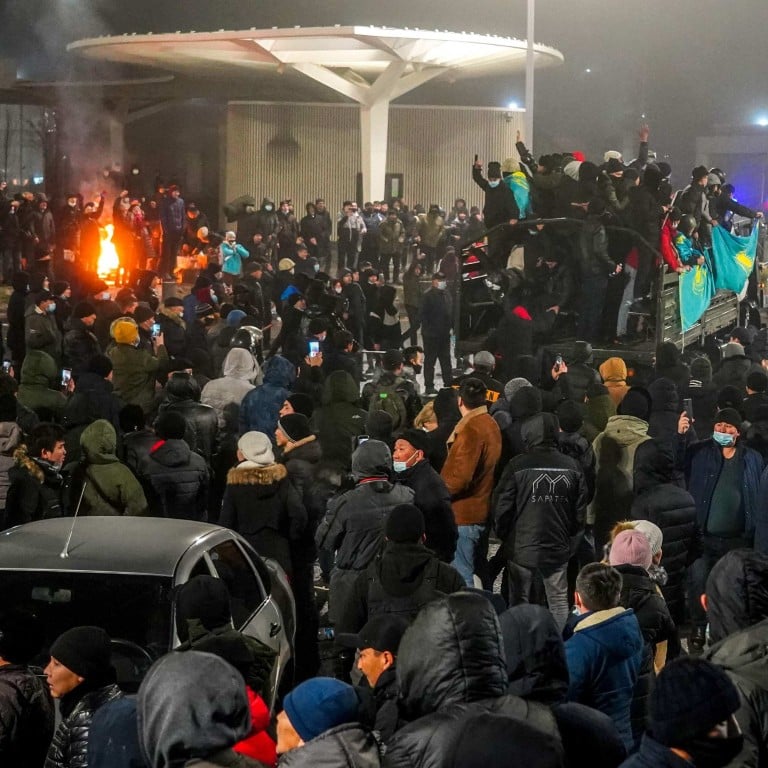
Explainer | Kazakhstan unrest: how will China’s economic interests be affected by the protests?
- The violence has stirred concerns about the impact on Chinese companies in the country, which has received billions of dollars of investment from its neighbour
- Positioned between China and Europe, Kazakhstan is a crucial link in the Belt and Road Initiative and was where Xi announced the massive infrastructure project
The world’s attention has been drawn to Kazakhstan in recent days after dozens of people were killed in clashes on the streets and protesters torched and ransacked public buildings in several cities.
The violence is the worst seen in the Central Asian state since it gained independence 30 years ago. The unrest has stirred concerns about the impact on Chinese companies operating in the country, which has been showered with investment under President Xi Jinping’s Belt and Road Initiative.
Here is a primer on China’s economic ties with Kazakhstan.
Why China’s belt and road plans for Central Asia are changing
Where is Kazakhstan and why is it “where China’s global dream began”?
Kazakhstan is located on China’s northwest border and is the largest landlocked country in the world, sitting on rich reserves of oil and minerals.
Positioned between China and Europe, it is a crucial link in the Belt and Road Initiative and was where Xi announced the globe spanning infrastructure project in 2013.
Commerce between Kazakhstan and China can be dated back to ancient times, when businesspeople from the Han dynasty traversed the old Silk Road with troops and camels on their way to Europe.
Will the unrest affect Chinese companies and investment?
The Chinese embassy in Kazakhstan has sent out a security risk alert to Chinese companies advising them to pay close attention to how the situation develops.
State media, however, have cited industry insiders saying so far the unrest has not had a great impact on Chinese businesses, and that gas pipelines running between the two countries should be safe because they are located in remote areas far from cities where the protests are occurring.
The Kazakh government is taking measures to ensure the safety of Chinese companies, state-backed tabloid the Global Times has reported.
How important is trade between China and Kazakhstan?
Kazakhstan counts on China as its second largest trading partner, and its number one export destination.
Total bilateral trade was US$22.94 billion in the first 11 months of 2021, according to data from Chinese customs, up 14.7 per cent from last year. China exported US$12.59 billion worth of goods to the country and imported US$10.35 billion dollars worth of products from Kazakhstan over the period.
Trade has been bolstered by the Belt and Road Initiative and has not been hindered by the pandemic.
China’s Belt and Road Initiative: smooth as Silk Road or endless controversy?
How much has China invested in Kazakhstan?
China invested US$19.2 billion in the country between 2005-20, according to the Chinese Embassy in Kazakhstan. Some 56 China-backed projects worth nearly US$24.5 billion are due to finish by 2023.
Other infrastructure projects include solar panel factories, logistics parks and wind farms.
China imported 4.02 million tonnes of natural gas from Kazakhstan between January and November last year, according to Chinese customs data.
Does Kazakhstan matter to the United States?
Yes. Kazakhstan is also home to billions of dollars of investment from American energy companies, including ExxonMobil and Chevron.
Kazakhstan has maintained cordial relations with the US and acts as an important force to counterbalance the influence of Russia and China.



